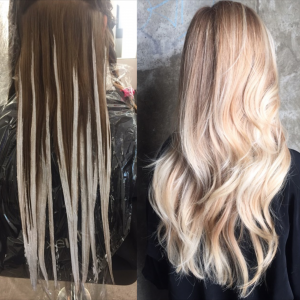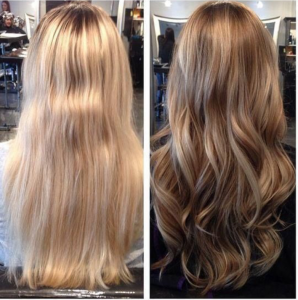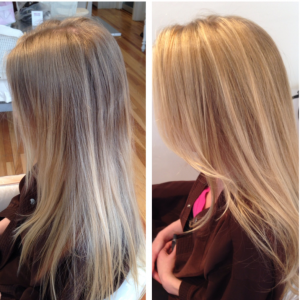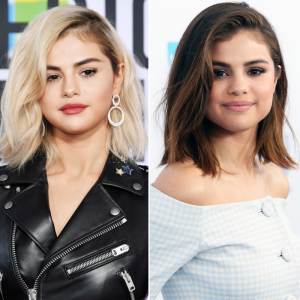Hair Coloring 101: Highlights, Balayage, Ombré, and More

Nowadays when you go get your hair done it’s so much more than just asking your hair stylist for a simple cut and color, and we’re thankful that there are so many options. That being said, we know it can get overwhelming. If you ask to get your hair colored, you’ll get follow-up questions asking whether you want highlights, balayage, lowlights, ombré, single-process, and many other possibilities. Because there are so many great options to choose from, how will you know which one is right for you?
Let’s break it down with the most common coloring processes…
Highlights
Highlights are a great way to add dimension to your hair and give it a sun-kissed look (even in the winter). They are typically applied through a method called “foiling.” Thin strands of your hair are brushed with dye and then wrapped into pieces of tinfoil to trap in the needed heat and moisture. If you want your hair to have some depth to it, then highlights may be for you. Try partial highlights if you don’t want to “dive immediately into” something that may not be for you.

Now, to get highlights you have to be willing to keep up with them. They usually need to be retouched every 6-8 weeks. Because highlights stem from the roots of your hair, when they begin to grow out your natural hair color will begin to show again, giving your highlights more of the unwanted “zebra stripe” vibe. Now even though this hair coloring process is extremely beautiful, it doesn’t come cheap. If keeping up with your hair every couple of weeks doesn’t seem like something you’re into, then maybe highlights are not the right choice.
Balayage
Balayage has taken the world by storm. You have definitely seen or at least know someone whose had it done. It is the latest and greatest new trend! Rather than brushing on dye like stylists do for highlights, with balayage hair is hand-painted. The hairstylist takes a paddle that is topped with hair dye, and then proceeds to use a brush to legitimately paint your hair. It’s as if your head is really a canvas, and your hair is the artwork! Hairstylists paint on the dye instead of foil it so that they can angle the color in a specific way to give it a multi-dimensional and natural effect. This method of hair coloring has become so outrageously popular because it is much more natural looking, and one barely needs to ever retouch it because the dye is not placed at the roots. Talk about a money-saver and great look all in one. Cha ching! If you want an easy and trendy ‘do that looks natural when grown out, then balayage is definitely the way to go.

Lowlights
While highlights use dyes that lighten your hair strands, lowlights use colors that darken your hair strands. How cool! Rather than bleaching your hair to go blonde or adding lighter tones to your hair, lowlights offer a simple solution! They add darker shades to your hair, which causes your natural highlights to stand out more against the dark pigmented strands of hair! This is a very natural look, and is healthier because it avoids you having to bleach your hair!

Ombré
Ombré is similar yet different from balayage. Ombré is when the bottom portion of your hair is dyed the color of your choice and is gradually shaded into your natural hair tone. Ombré is more for the daring type of girl! For example: a brunette getting blonde ombré will have her natural brunette roots, but it would fade into a completely blonde bottom half. Whereas “balayage” is literally derived from the French word meaning “to sweep,” it is swept into your hair naturally. So therefore a brunette can have blonde swept into her strands but still keep her natural brunette hair shade within the top half of her hair to look more realistically sun-kissed.

Single Process
Single-Process is when you chose a color and then that color is applied to your entire head, including your roots. It is also known as your base color. Because this is a one step ordeal it is super easy, but don’t let this fool you…it also requires a large amount of maintenance! Similar as with highlights, you must keep up with dying your roots and if you decide to go from a blonde to a brunette… and this will need to be done often. This process is perfect for those trying to cover up gray hairs, or if your mane is looking dull and you want to add a little more shine.

Hopefully these explanations will help you decide which one of these looks would satisfy your needs the best!




Related posts